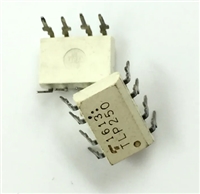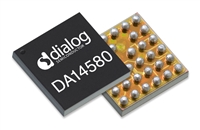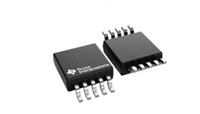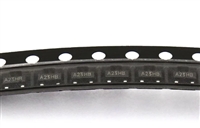HPQ Series
Isolated High Power Quarter Brick DC/DC Converters
Absolute Maximum Ratings
Input Voltage
Continuous or transient
Output Power
75 Volts max.
166.6 Watts max.
0V. min. to +15 V. max.
See Fuse section
On/Off Control
Input Reverse Polarity Protection
Current-limited.
Devices can withstand sustained short circuit without damage.
Output Current
Storage Temperature
Lead Temperature
-55 to +125 °C
See soldering guidelines.
Absolute maximums are stress ratings. Exposure of devices to greater than any of these conditions may adversely affect long-term reliability. Proper operation under conditions other than those listed in the Perfor-
mance/Functional Specifications Table is not implied nor recommended.
CAUTION: This product is not internally fused. To comply with safety agency certifications and to avoid injury to personnel or equipment, the user must supply an external slow-blow fuse to the input terminals. See
fuse information.
Specification Notes
(1) All models are tested and specified with external 1||10 μF output capacitors and no external input capacitor. All capacitors are low ESR types. These capacitors are necessary to accommodate our test equipment
and may not be required to achieve specified performance in your applications. All models are stable and regulate within spec under no-load conditions.
All specifications are typical unless noted. General conditions for Specifications are +25 °C, Vin=nominal, Vout=nominal, full load. Adequate airflow must be supplied for extended testing under power.
(2) Reflected Input Ripple Current is tested and specified over a 5 Hz to 20 MHz bandwidth. Input filtering is Cin=33 μF, 100V, Cbus=220 μF, 100V electrolytic, Lbus=12 μH.
(3) Note that Maximum Power Derating curves indicate an average current at nominal input voltage. At higher temperatures and/or lower airflow, the DC/DC converter will tolerate brief full current outputs if the total
RMS current over time does not exceed the Derating curve. All Derating curves are presented at sea level altitude. Be aware of reduced power dissipation with increasing density altitude.
(4) Mean Time Before Failure is calculated using the Telcordia (Belcore) SR-332 Method 1, Case 3, ground fixed conditions, Tpcboard=+25 °C, full output load, natural air convection.
(5) The On/Off Control is normally controlled by a switch, relay or open collector or open drain transistor. But it may also be driven with external logic or by applying appropriate external voltages which are refer-
enced to Input Common.
(6) Short circuit shutdown begins when the output voltage degrades approximately 2% from the selected setting.
(7) The outputs are not intended to sink appreciable reverse current. This may damage the outputs.
(8) Output noise may be further reduced by adding an external filter. See I/O Filtering and Noise Reduction.
(9) All models are fully operational and meet published specifications, including “cold start” at –40 °C. Maximum power requires that the package temperature of all on-board components must never exceed +128°C.
(10) Regulation specifications describe the deviation as the line input voltage or output load current is varied from a nominal midpoint value to either extreme.
(11) The converter is normally specified with the Input/Output filtering listed in Note 1. Higher capacitive load will reduce noise but at the expense of delayed settling time, extended turn-on time and slower transient
response. Use only as much output filtering as needed and no more. Thoroughly test your system under full load with all components installed. Low ESR capacitors with high capacitance may degrade dynamic
performance.
(12) “Hiccup” overcurrent operation repeatedly attempts to restart the converter with a brief, full-current output. If the overcurrent condition still exists, the restart current will be removed and then tried again. This short
current repeating pulse prevents overheating and damaging the converter. Output current limit and short circuit protection is non-latching. Once the fault is removed, the converter immediately recovers normal
operation.
(13) Do not exceed maximum power specifications when adjusting the output trim.
(14) At zero output current, the output may contain low frequency components which exceed the ripple specification. The output may be operated indefinitely with no load.
(15) Input Fusing: If reverse polarity is accidentally applied to the input, a body diode will become forward biased and will conduct considerable current. To ensure reverse input protection, always connect an external
input slow-blow fuse in series with the +Vin input. Use approximately twice the full input current rating with nominal input voltage.
(16) Output accuracy is dependent on user-supplied trim resistors. To achieve high accuracy, use 1% or better tolerance metal-film resistors.
(17.) Always connect the sense pins. If they are not connected to a remote load, wire each sense pin to its respective voltage output at the converter pins.
Soldering Guidelines
Murata Power Solutions recommends the specifications below when installing these converters. These specifications vary depending on the solder type. Exceeding these specifica-
tions may cause damage to the product. Be cautious when there is high atmospheric humidity. We strongly recommend a mild pre-bake (100° C. for 30 minutes). Your production
environment may differ; therefore please thoroughly review these guidelines with your process engineers.
Wave Solder Operations for through-hole mounted products (THMT)
For Sn/Ag/Cu based solders:
For Sn/Pb based solders:
Maximum Preheat Temperature 115° C.
Maximum Preheat Temperature 105° C.
Maximum Pot Temperature
Maximum Solder Dwell Time
270° C.
Maximum Pot Temperature
250° C.
7 seconds Maximum Solder Dwell Time
6 seconds
www.murata-ps.com
Technical enquiries email: sales@murata-ps.com, tel: +1 508 339 3000
MDC_HPQ Series.A07 Page 5 of 10






 TLP250光耦合器:资料手册参数分析
TLP250光耦合器:资料手册参数分析

 DA14580 低功耗蓝牙系统级芯片(SoC):资料手册参数分析
DA14580 低功耗蓝牙系统级芯片(SoC):资料手册参数分析

 INA226 高精度电流和功率监控器:资料手册参数分析
INA226 高精度电流和功率监控器:资料手册参数分析

 SI2302 N沟道MOSFET:资料手册参数分析
SI2302 N沟道MOSFET:资料手册参数分析
